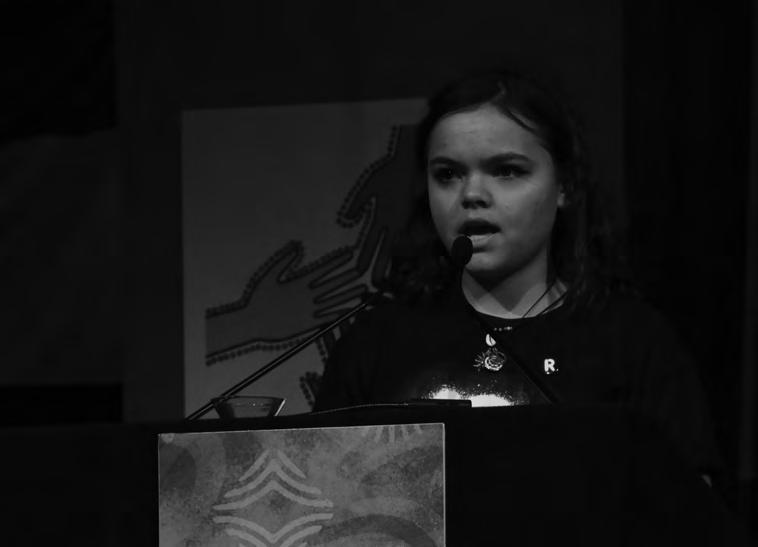
27 minute read
Reconciliation Day
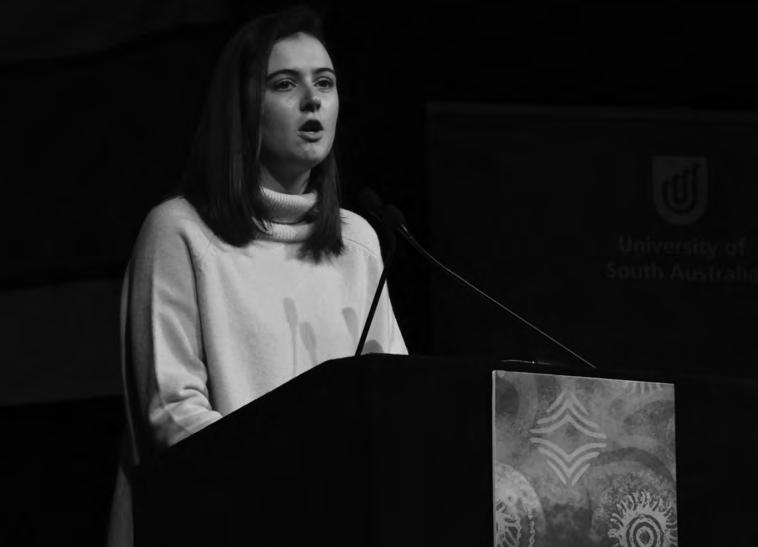
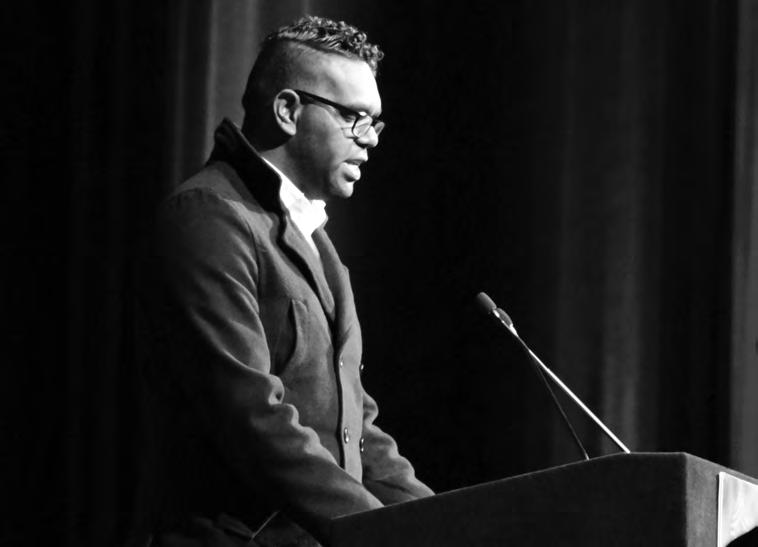
Advertisement
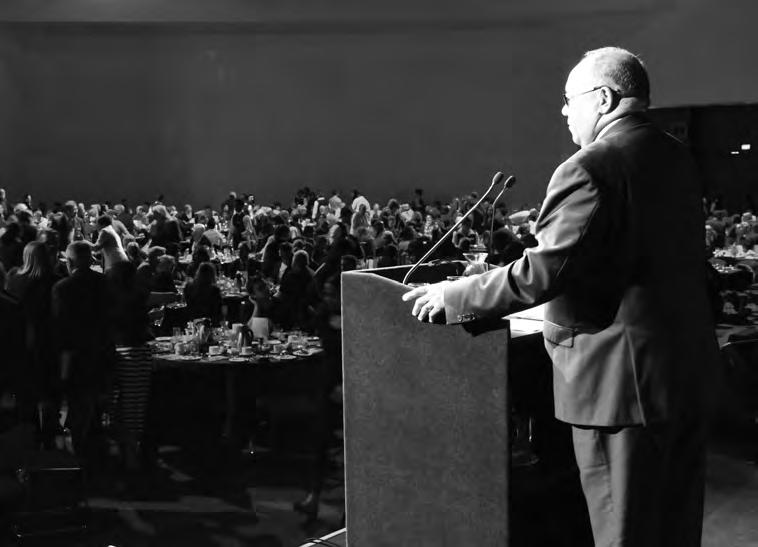
Above, from top: Rebekka Rogers; Arabella Hart; Marcellus Enalanga; Peter Buckskin addresses the audience.
A large crowd of around 1200 people gathered together for a National Reconciliation Week Breakfast hosted by Reconciliation SA on 27 May 2016 at the Adelaide Convention Centre.
Centrepiece of the event was a topical speech on reconciliation and recognition from the then Joint Campaign Director of the National Recognise Movement, Tanya Hosch. Talented South Australian performer Nathan May performed songs from his newest EP ‘Reflections’.
Aboriginal Young Achievers Ebonie Frankel, Marcellus Enalanga and Arabella Hart addressed the large crowd, sharing their experiences, inspiring achievements and hopes for the future.
Rebekka Rogers, a Recognise Youth Rep, asked to be Recognised in a personal and powerful speech.
RECOGNISE ME
My name is Rebekka Elouise Kantjupayi Rogers; I am a 16 year old student and I attend Adelaide High School. My grandparents are Badimia (Buddymaya) and Wunmuna (Wunmulla) Martu and I am a Yamatji Nyalu (Nyarloo) born on the Anangu Pitjantjatjara Yankunytjatjara Lands in South Australia.
I am here today representing the Indigenous Youth of South Australia and we are demanding to be recognised. I am one of eight Recognise Youth Ambassadors in South Australia and we are advocating for Indigenous Rights in a national conversation about recognition. We are striving for change that is genuine, meaningful and born of all voices, including Aboriginal and Torres Strait Islander peoples. My voice, along with many others, will contribute to a conversation that will become a turning point in the reconciliation of our Nation.
RECOGNISE ME.
Because, I know change is possible, I am here today speaking for my Nanna Pat and my mother who were both born on their own land, yet at the time of their births were not recognised in the constitution as human beings. I am again speaking for my Nanna, who as a child was sent to Karalundi Mission because it was the deemed “best thing for her”. These problems that have plagued Indigenous Australia are not only limited to the last century or the ones before, these problems are still prevalent today and are echoes from the early colonisation of our country.
RECOGNISE ME.
Because I have a strong future ahead and I will continue to carry the same torch that my elders have carried before me and will continue to pursue unequivocal recognition of Aboriginal and Torres Strait Islander peoples, both in this country and across the globe.
RECOGNISE ME.
I am the young face of Indigenous reconciliation and recognition and I am here to ensure that my brothers, sisters, uncles, aunties, grandmothers and grandfathers can rest easy knowing that we are recognised in our own country and on our own land.
I will not sit and let the First People’s voice go as unheard as it has been, for far too long. Recognition is not the end of the road, but one step in the ongoing journey of reconciliation.
Our generation is ready for change.
RECOGNISE ME.
AND allow my soul to be given back to my body, only then will the relationship I have with the lands and waters become recognised and legitimised.
RECOGNISE US.
Because only together can we make lasting change for the future generations of Australia
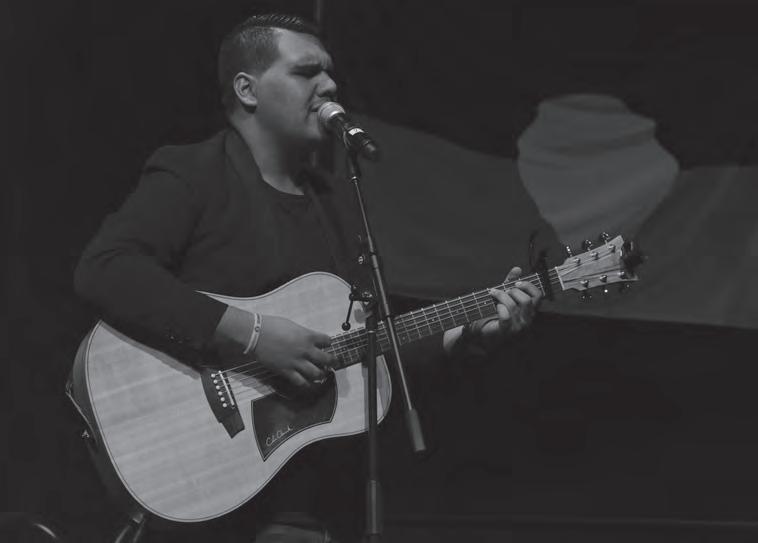

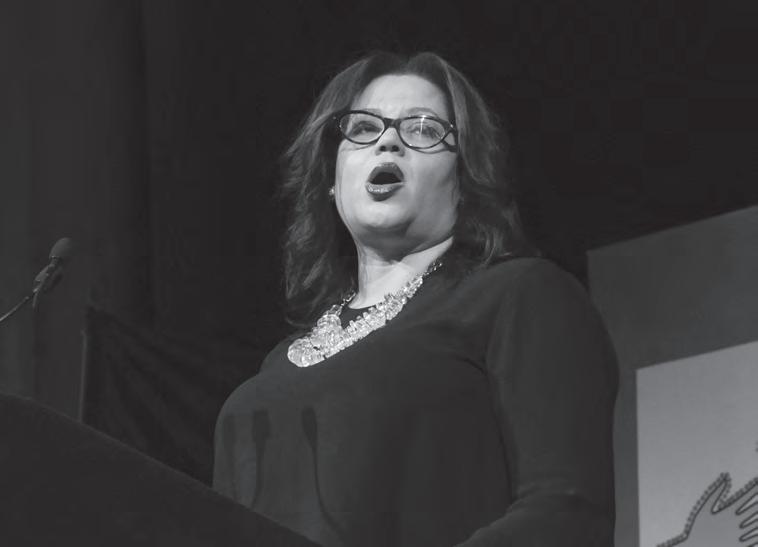

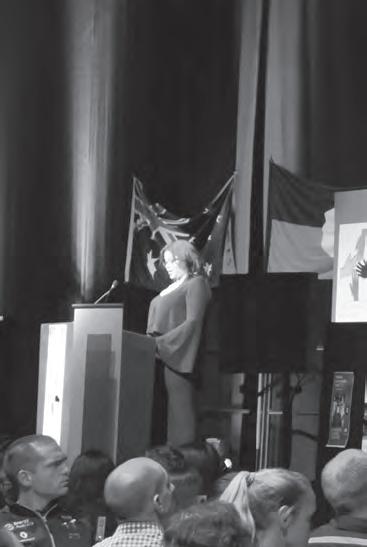
THE GRAHAM F SMITH PEACE FOUNDATION &
in association with UNAASA, WILPF, Sophia, Psychologists for Peace, A Peace of the Action & the Quakers
invite you to Building Blocks for Peace High Tea to Commemorate the International Day of Peace
SPEAKERS: Jack Heller and Christine Blanck, RECOGNISE Youth Representatives FEATURING: An exhibition of work for sale by the iconic South Australian artist Ann Newmarch DATE: Sunday 18 September 2016 TIME: 3.00pm-5.00pm LOCATION: At the Baha’i Centre of Learning, 275 Flinders Street, Adelaide COST: Tickets $50 pp, Concession $40 pp book at www.trybooking.com/moev RSVP: 12 September 2016 All funds raised will be granted to artists working on human rights, social justice and environmental sustainability. For further information email
contact@artspeacefoundation.org
Each year the International Day of Peace is observed around the world on 21 September. In 1981 the UN General Assembly declared this a day devoted to strengthening the ideals of peace, both within and among all nations and peoples. The first observance was held in 1982. The Day’s theme for 2016 is “The Sustainable Development Goals: Building Blocks for Peace.”
www.un.org/en/events/peaceday/
The Graham F Smith Peace Foundation Inc.
Working for Peace Through the Arts
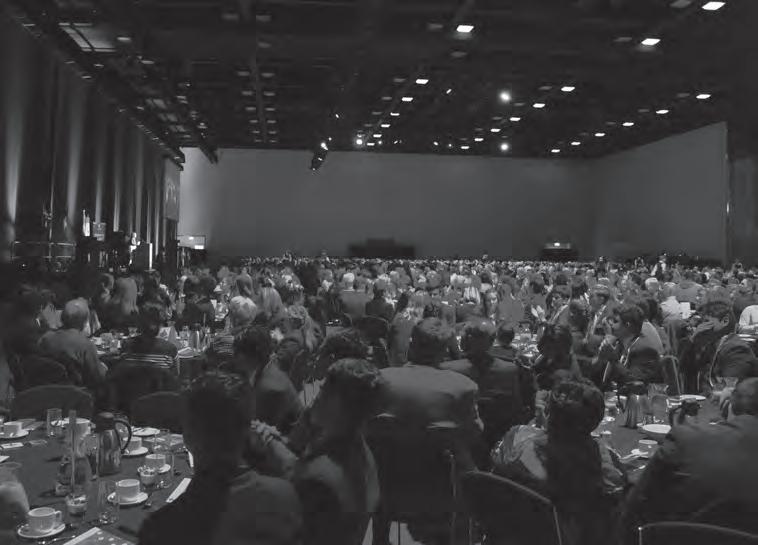
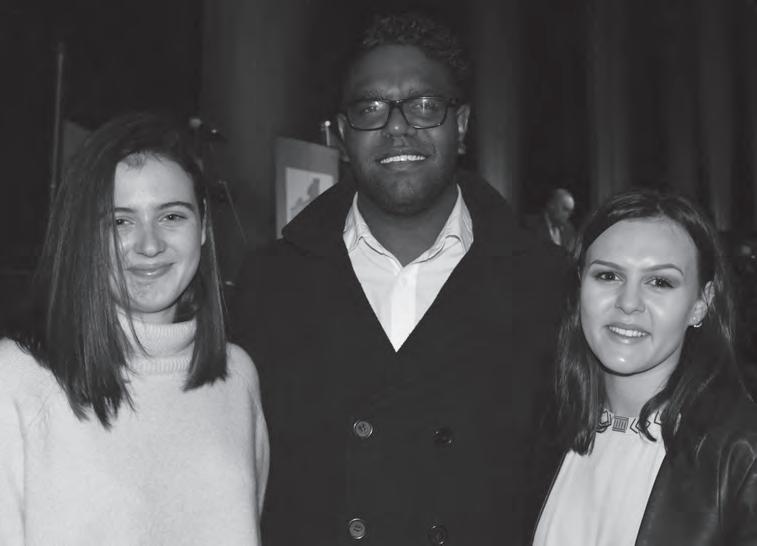
This page, left to right: Top row: Nathan May. Second row: Tanya Hosch. Third row: Rebekka Rogers; Tanya Hosch. Fourth row: The Reconciliation Breakfast event at the Entertainment Centre; Arabella Hart, Marcellus Enalanga and Ebonie Frankel.
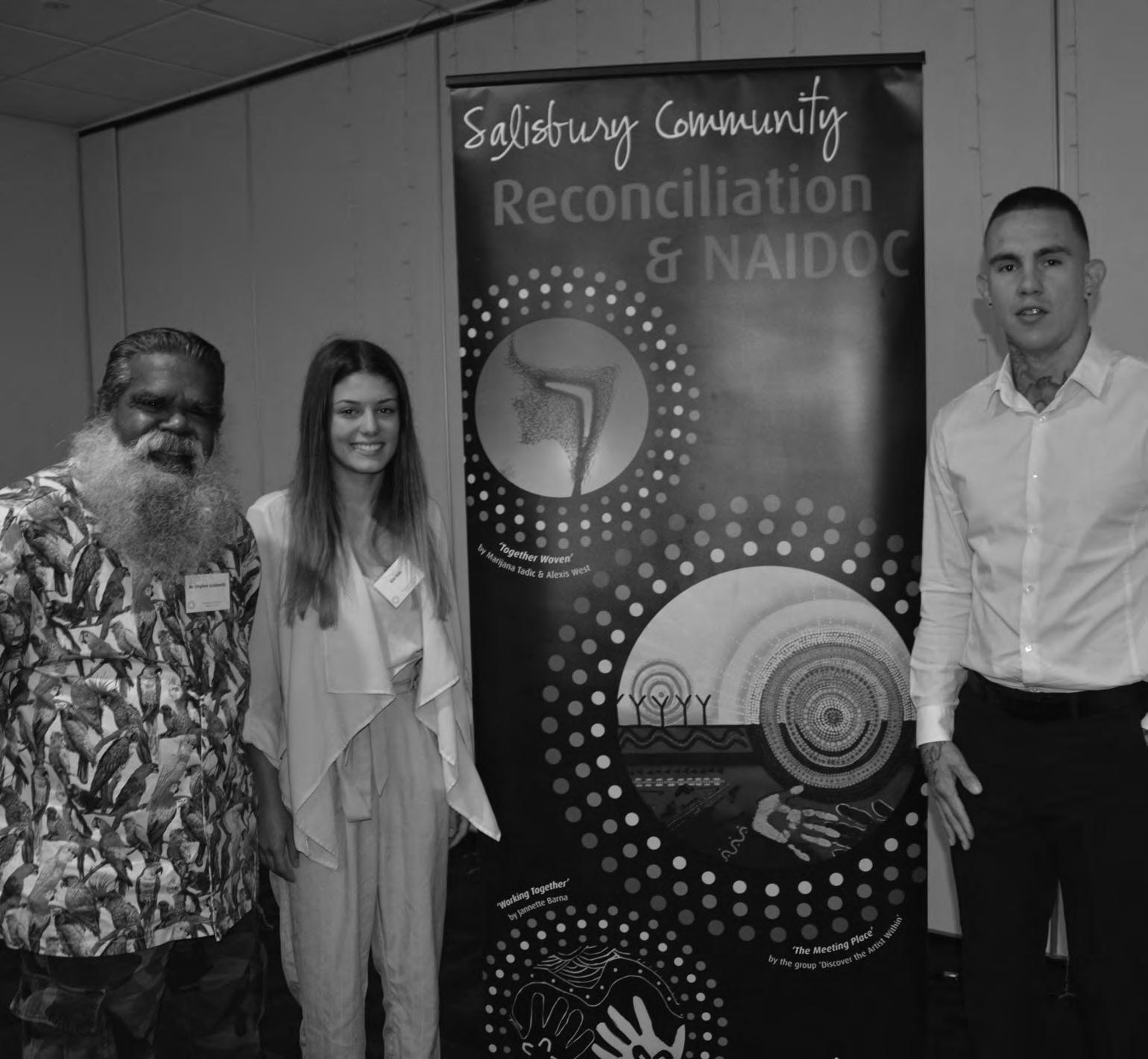
Learning language and culture can be an important positive force for young people facing life’s challenges according to a youth mentor at Tauondi Aboriginal College.
Kira Bain addressed a Reconciliation in the North event recently, sharing her challenges and achievements. The event also featured a presentation on the history of the Adelaide plains, presented by Kaurna elder Stephen Gadlabarti Goldsmith.
Ms Bain says that she first started learning Kaurna in Year 8 and as a young adult now recognises how important that was for her at a difficult time.
“When I got to year 8, stuff was going on, I had a lot of family issues at home, you know my parents split up and other stuff happened and it got to the point where I would tell the teacher I can’t come into school today because of whatever reason, and there was always a reason, and it actually started to sound like I was lying, but I wasn’t,” she explained. “So I wasn’t at school much, because of all these family reasons and you know that messed with my head for a bit, and so in year 8 when I went to school, I would just run amok. If someone looked at me, I’d just throw something at them,” Ms Bain said.
She was fortunate to cross paths with Jack Buckskin, who teaches Karuna language and culture to school students and the community.
“When Jack was there, he sort of helped me with it, he said instead of throwing stuff at people, how about you just say something to them in Kaurna, and they’ll just be really shocked and think you’re deadly!” Ms Bain said.
“So yeah that was good, I just started running people down in Kaurna and it was fun!” she laughed.
From her rebellious beginnings, Kira Bain was soon absorbed in the world of Kaurna language and culture. “It just got me wanting to learn more, learning to be able to say more. And it just went from learning a couple of words, like being a little bit nasty to people, to learning heaps more, being nice to people for one, but you know saying welcomes and singing songs, I sing songs to my niece all the time and she loves it!” she said.
As a Youth Mentor at Tauondi Aboriginal College and in her spare time, she takes every opportunity to share her knowledge of Kaurna.
“I teach primary school kids a lot, I’m starting to get into teaching high school kids more,” she said
“I used to work as a hairdresser, so all of my clients that came in, I used to teach them as well, so that ranged from little babies to 90-year-old women. And they loved it, it was great” she said Ms Bain has gone on to do formal studies relating to her language learning – she’s close to completing a Certificate III in Learning an Endangered Language and Certificate IV in Teaching an Endangered Language.
Ms Bain, who has Ngarrindjeri heritage, believes that learning Kaurna is a valuable thing for all community members, Aboriginal and non-Aboriginal.
“I think that everyone should know some Kaurna, not in that we have to speak Kaurna all the time, but at least know a bit about where you’re living and where you come from,” she said.
“Everyone knows about you know, Captain Cook coming to Australia, but that’s really it, they don’t know about the rest of the history of our area and I think it’s important because if people from another country visit and they’re going to want to know about where you come from and where you live and most people aren’t actually going to be able to say the proper version of the culture of the area,” Ms Bain said.

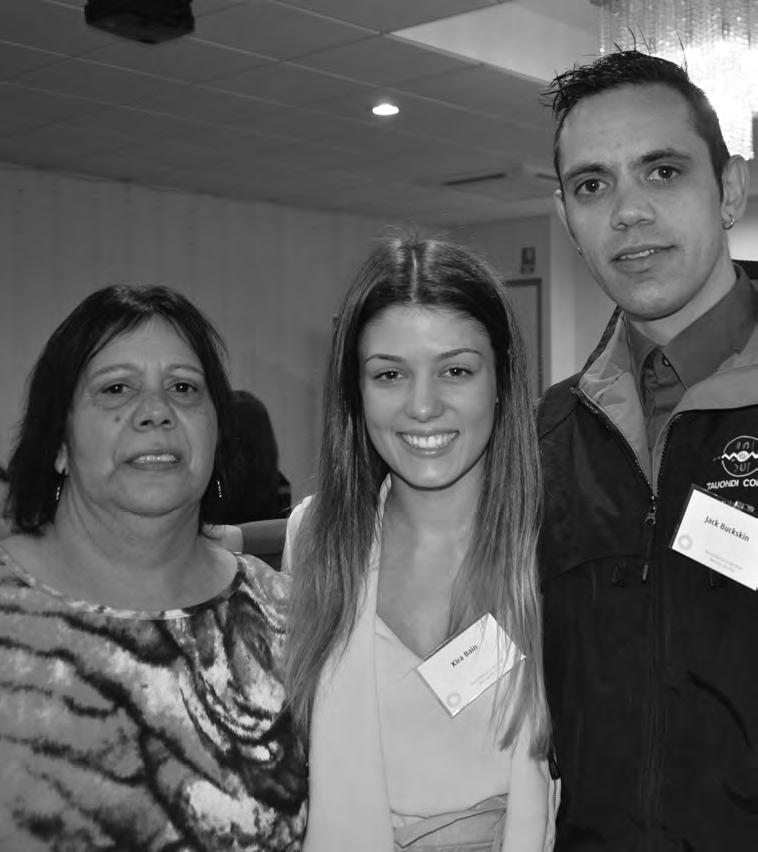
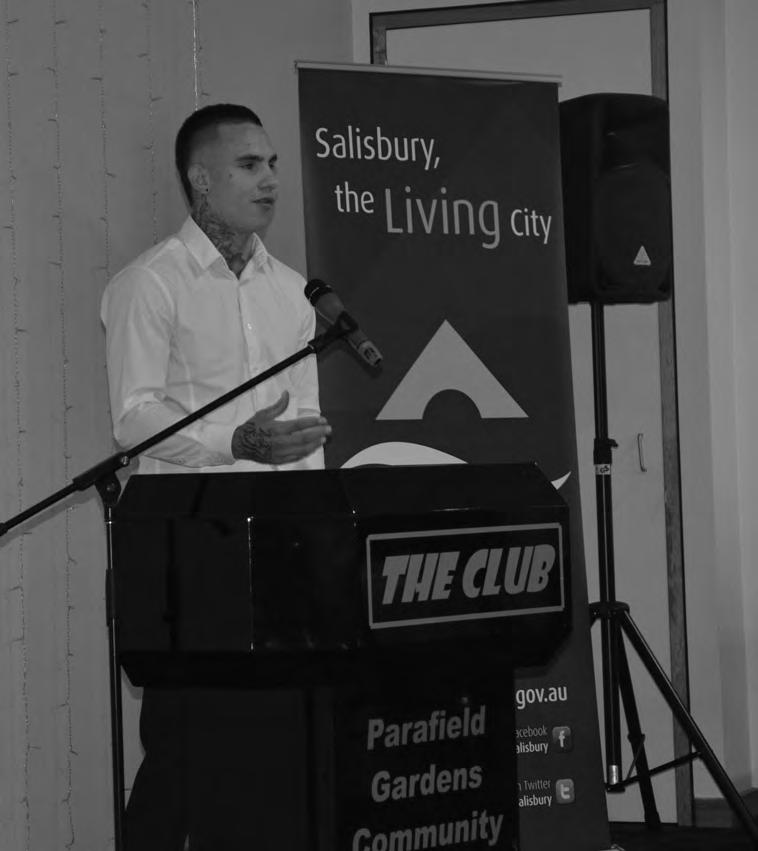

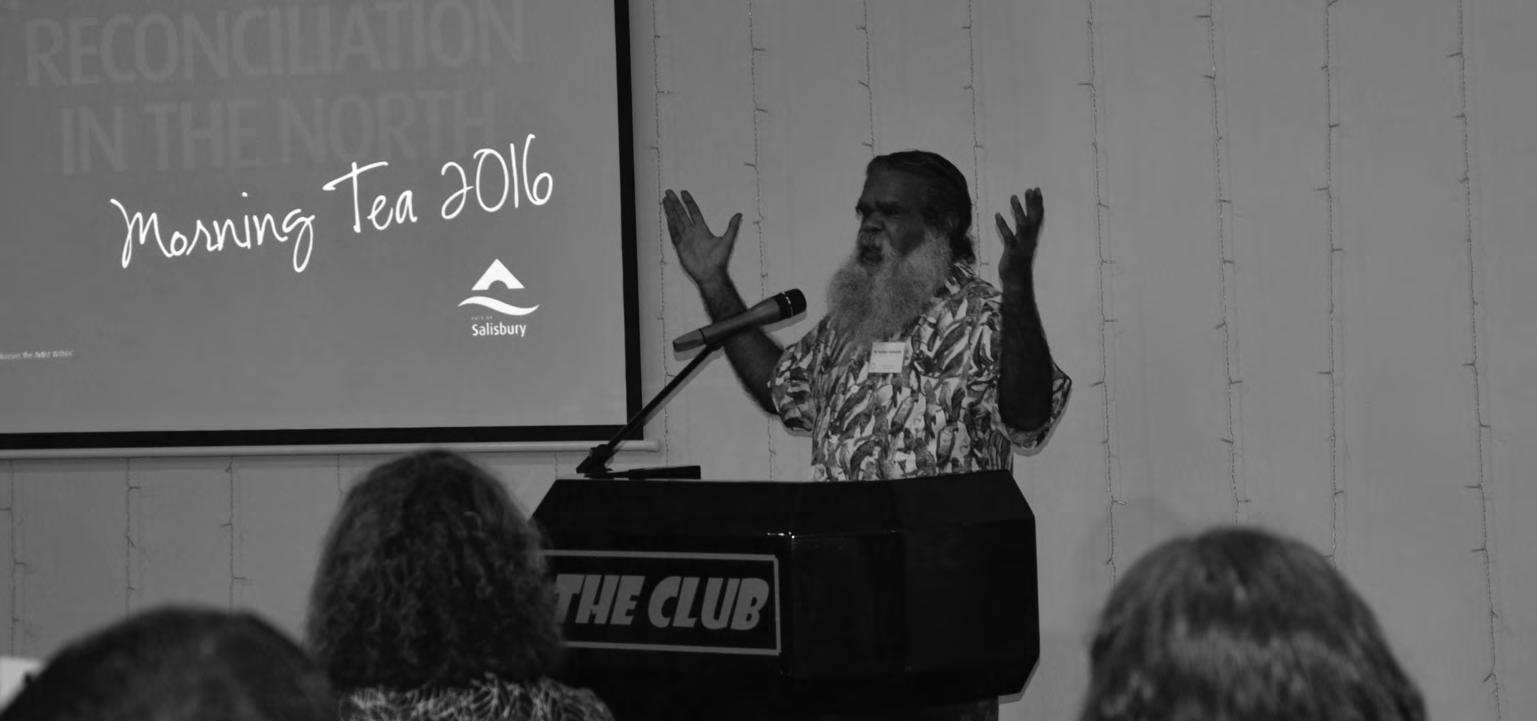
Opposite page: Stephen Gadlabarti Goldsmith, Kira Bain and Shane Cook. This page, clockwise from top left: Heather Hewett, Kevin O’Loughlin and Nichola Kapitza from City of Salisbury; Shane Cook; David Schreiber and Frank Wanganeen; Stephen Gadlabarti Goldsmith; Annette Buckskin, Kira Bain and Jack Buckskin.
The Federal Budget has cut $4.5 million from the National Aboriginal and Torres Strait Islander Legal Services (NATSILS) effective from 1 July 2017.
Funding will be cut from the Indigenous Legal Assistance Program (ILAP), decreasing overall funding by over $6 million in 2017. Further decreases are planned in the 2018 –19 budget. The cuts to the funding will impact the most vulnerable clients of the service such as victims of family violence, rural and remote clients and children. This is mainly because there will be a forced reduction in staffing and withdrawal of front-line services says the National Aboriginal and Torres Strait Islander Legal Services (NATSILS). Wayne Muir, NATSILS Chairman, said in a media release from NATSILS, that the cuts were an illusion.
“Instead of cost-saving, the flow-on effect would include putting more pressure on the Courts, the Health sector, Corrections and ultimately rising the costs to Government.
The Prime Minister has said publicly that he wants to see justice outcomes for our people improve, that he wants to engage with Aboriginal and Torres Strait Islander communities. We are here, we are waiting, and his government is cutting the funding that is aimed at delivering the very outcomes that he has called for,” Mr Muir said.
The funding cut will affect community legal centres, the legal aid commission and the National Congress of Australia’s First Peoples.
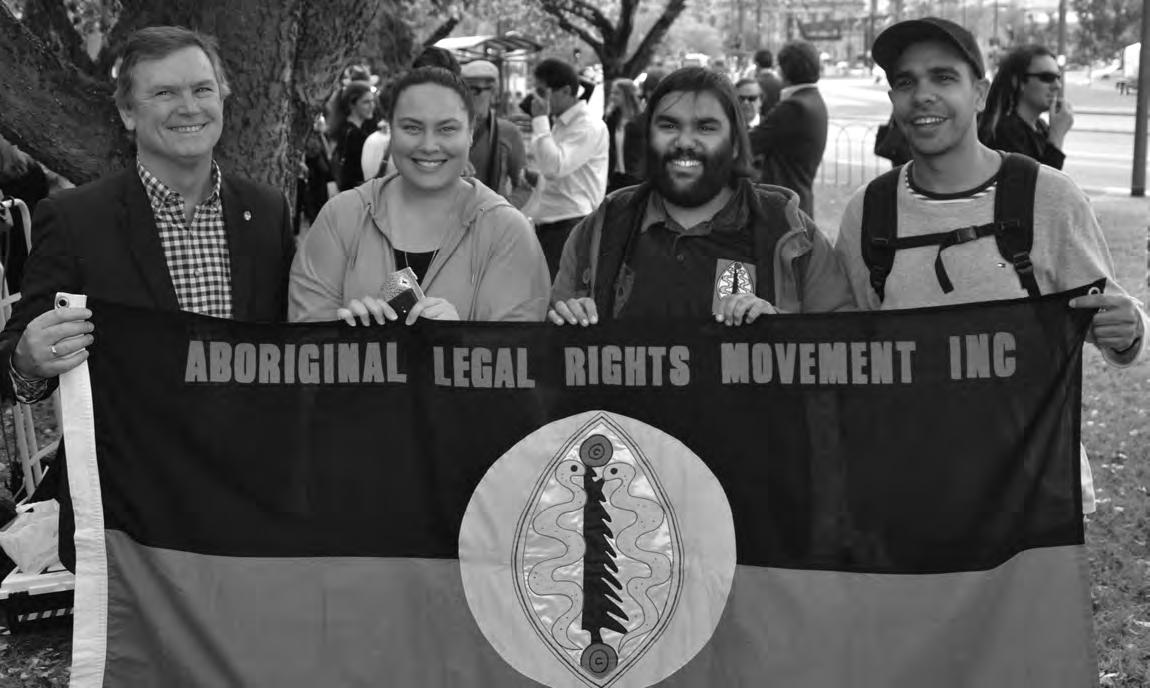

Above top: Ross Womersley, LaToya Rule, Dwayne Coulthard and Aaron Haseldine. Above bottom: Rally in Victoria Square against cuts.
Solar Panels Breathe New Life onto Country
The communities of Ngurrara and Kurnturlpara are able to live on their lands and build an economy thanks to a renewable energy solution thought up by Graeme Smith, Manungurra CEO.
Indigenous Business Australia (IBA) and the Manungurra Aboriginal Corporation (Manungurra) have worked together to have solar panels and batteries installed in both of the communities, saving them hundreds of dollars a week from powering homes with diesel generators.
Rather than buying the systems outright, savvy business decisions and assistance from the IBA has meant that the communities have leased the systems, with the option to upgrade to better technology later.
The shift to renewable energy has meant that the communities have grown from two permanent adults to 30–40 adults and their children, who are able to now live independently and more affordably on country.
The solar panels and their batteries were installed and supplied by Aboriginal owned company Allgrid, based in Queensland.
Ray Pratt, Allgrid CEO, spoke highly of a panel and battery system for communities to the ABC, ‘The sun hits your solar panel, which is on the roof, and creates energy. The community will either use that energy during the day, and energy that they’re not using will get stored in the batteries, and they’ll use that energy at night-time when the sun goes down,” he said. The community members themselves helped with the setup, assisting with the installation of concrete slabs, unloading the panels and batteries on site. As a result, they would like to develop primary industry on site with a plan to create a base for rangers.
Staff get ready at SANTS annual Workshop
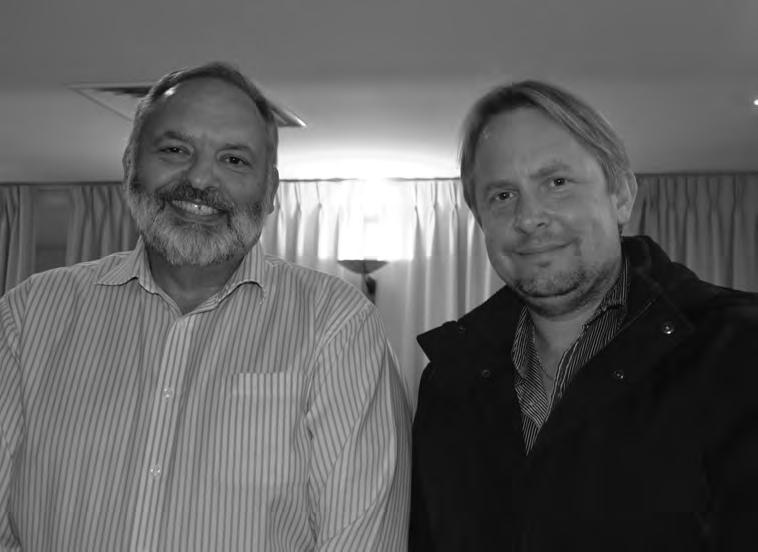
SANTS staff braved wild weather and falling trees on 9 May 2016 to get together at iconic Wirrina Resort for their annual Staff Workshop.
SANTS’ staff covered effective management skills, code of conduct and risk management and all important changes to funding arrangements. The staff workshop was held in light of the recent organisational restructure of SANTS. Last year, the organisation reviewed its structure to ensure a more efficient business model and to guarantee ongoing financial, legal and logistical assistance for native title groups. At the workshop staff were provided with training from Business SA and management and performance training from Nicole Clark, HR and Business Services Manager. Mr Clark said the annual staff workshop is an opportunity for SANTS Staff to reflect on the year gone by and it provides a chance for valuable future planning. “We covered many areas of our organisation’s goal and strategic priorities. It was a time for reflection and reinvigoration to assist us in planning for the future to ensure we are best placed to provide services to clients. The Workshop was chance for people to reconnect after significant changes to the organisation. “Since then, we as a team are more focussed than ever before and confident in the expertise and services we provide to our clients,” said Ms Clark.
The first Riverland NO:RI Festival will be held at the Bonney Theatre in Barmera on October long weekend to honour the wonderful life and whole-hearted dream of Aunty Ruby Hunter.
Archie Roach along with David Arden and Mon Cherie are headlining the festival and some special guest artists will perform on the day during the Barmera Street Market.
The event is an initiative of the Ruby Hunter Foundation.
Uncle Wally (Eric) Richards, Chair of the Ruby Hunter Foundation said the foundation was set up to honour Ruby’s dream to encourage young Indigenous Australians to follow their passion and succeed in life.
“Aunty Ruby had a dream for her people to be able to showcase their musical and artistic talent on the big stage and she did so much to support young people in their artistic pursuits,” he said. The Ruby Hunter foundation was formed by Ruby’s family in order to continue her commitment to the arts and her people. “It intends to showcase Aboriginal culture at its best and it also established a trust fund which will assist young Aboriginal people to access an education in the arts and a future in the industry,” said Mr Richards.
The Ruby Hunter foundation has big ideas for the Riverland Festival and plan to extend the event to two days next year. This festival is “designed to provide the community with a taste of what to expect at the two-day festival next year, when some of Australia’s most prominent performers will be attending to honour Ruby. “We expect to draw large crowds from across the state, interstate and overseas and attract people who have a desire to access an insight into a culture which is not often shared with the wider community,” said Mr Richards. The Riverland was selected as a permanent site for the festival because Ruby was born on the riverbank of Renmark. She was a member of the stolen generation, but carried a strong connection to the area and was laid to rest at Gerrard. A festival fundraiser is being held at Renmark Hotel on September 20th. The Festival website was officially launched last month. For more information about the festival and the fundraiser event please visit the Ruby Hunter Foundation Facebook Page and the official website rnmf.org.au for ticket sales and program.
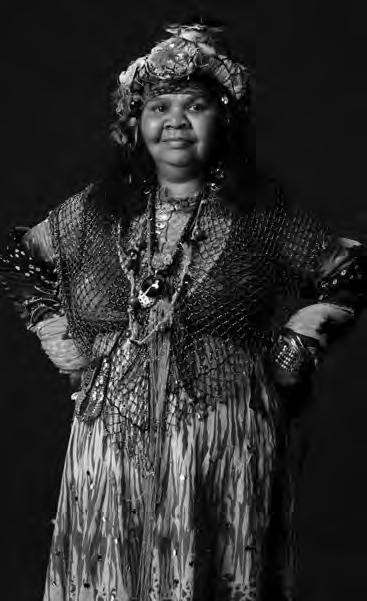
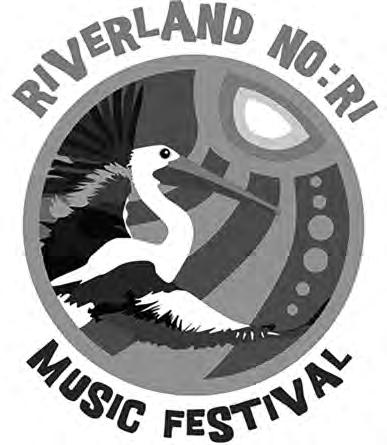
Indigenous Resurgence
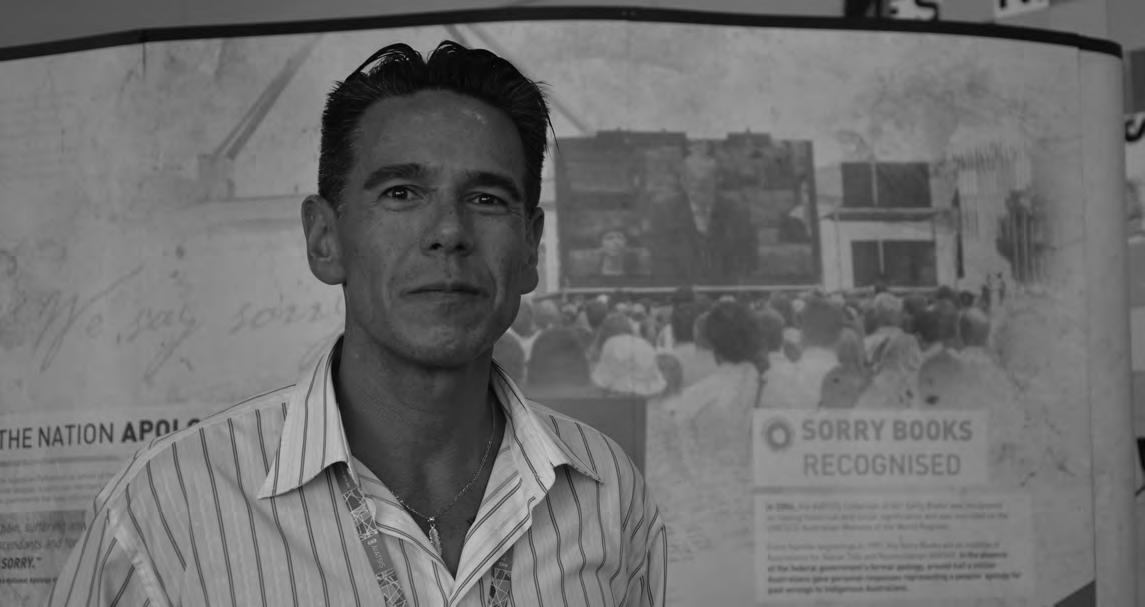
Speaking from the Canadian experience, with knowledge of Australian history, Professor Gerald Taiaiake Alfred presented at this year’s national native title conference an idea called Indigenous Resurgence.
He emphasised the importance of first-nations peoples maintaining their traditional practices in spite of government and institutional pressure to assimilate. He spoke about Indigenous nationhood and pride for the next generation. Gerald Taiaiake Alfred is member of the Mohawk Nation and a Professor who specialises in the restoration of landbased cultural practices, decolonisation strategies and Indigenous Governance. Professor Alfred said denial still exists within mainstream culture and there seems to be no sign of change. “Over the past 20 or 30 years the Canadian government has demonstrated its unwillingness to move forward and redefine the relationship [between Indigenous people and government].” He said there is a similar attitude in Australia towards its Indigenous population. “I think what people are facing here, if I may respectfully say, is that there is a rhetorical shift in government policy and language with statements of reconciliation, statements of regret and apology, just like the Canadian experience, but they are all moderations and attempts to moderate the movement of Indigenous peoples,” he said. It is with this critique, that Professor Alfred and his colleagues advocate the idea of Indigenous Resurgence. “The alternative we have to offer is to try to maintain ourselves in this legal and political context of assimilation, denial and so forth, it’s an idea we are calling Indigenous Resurgence. “It’s a way to find ourselves and to learn what all our relatives in our natural environment have to teach us and to commit ourselves to language restoration and cultural practices in an immediate and impactful way.” Professor Alfred said it is about providing a pathway for the next generation to preserve a greater understanding of traditional life than the current generation. “Indigenous Resurgence offers us the opportunity to get beyond the idea of reconciliation with colonisation and move towards a future where our children are offered more opportunities than we are today and the opportunity to be more indigenous than we are today.” Professor Alfred spoke about his own family’s experience as Mohawk, and the traditional hunting trips and initiations with his son and Elders as a way to connect his children to culture at an early age. “It’s about giving them hope that in the end when our time is past and we pass on our struggle of our people to them, that they’ll achieve greater things than we were able to achieve because they’re that much more stronger politically because they are rooted in their language, they’re rooted in their culture and they are drawing power from the land,” he said. Professor Alfred is the founding Director of the Indigenous Governance Program at the University of Victoria in British Columbia, Canada. Professor Alfred first came to Australia in 1992 as part of a royal commission into Canadian land claims. He said Australia taught him a lot about the struggles of Indigenous peoples and provided insight into the similarities between the Canadian and Australian Indigenous experience. “The experience of coming to Australia influenced my understanding of Indigenous struggles and the issues we face and it opened my eyes to the commonality of our struggle. “I thought the issues we faced over the generations of having our lands occupied by foreigners, invaded and being removed from our land was a Mohawk struggle. Of course we all have our own experiences but the sense of struggle for all us as Indigenous people is the same.” He said Indigenous people have a responsibility to maintain culture. “Indigenous peoples have not only a political desire to protect their territories and govern themselves, but it is a sacred responsibility coming from their ancestors, a sacred responsibility coming from the stories, the spiritual commitment to maintain themselves as autonomous people in their country.” If government and public policy is still not willing to give us our freedom and needs as Indigenous peoples then we have to do it ourselves,” said Professor Alfred.
60 year long shadow
This year marks the 60th anniversary of the first British atomic bomb tests at Maralinga, on Anangu country. In total the British conducted seven nuclear tests on Anangu land and also conducted the ‘minor trails’ – over 700 trials using highly radioactive materials.
According to one prominent South Australian author these were terrible events that had long term effects on that country and people from that country but are not well known by many South Australians. Christobel Mattingly says that the nuclear tests are “a terrible chapter of South Australian history that is not widely known”. “I go into a lot of schools and rarely is there anyone, student or teacher who’s heard of Maralinga. It’s quite scary really how ignorant South Australians are of their own history,” she told Aboriginal Way. “Especially now as they’re talking of setting up nuclear waste dumps in South Australia, and this history isn’t known by enough people. “It’s just a whole episode of Australian history that has never received the attention that it should,” she said.
Christobel Mattingly’s latest book explores the life of one woman who lived through those events, the impact on her, her family and community. Maralinga’s Long Shadow – Yvonne’s Story powerfully tells the life story of the late Yvonne Edwards through Mattingly’s words and Yvonne’s own art.
Christobel Mattingly met Yvonne Edwards late in her life, but wanted to tell her whole story, including how she was forcibly moved from her homelands as a child due to the British nuclear tests.
“Yvonne Edwards was an Anangu lady who was born just outside Ooldea in the bush, the Ooldea’s soak, which had been a life source of water to Anangu people from all over their lands, especially in times of drought,” Ms Mattingly said. “A few decades before Yvonne was born, United Aborigines Missions had set up there. Then suddenly when Yvonne was less than two years old, there was a row within the mission, it suddenly closed and the people, without any warning, were evicted from their age old country and put in the hands of Lutheran missionaries, who took them eastwards to country that’s now known as Yalata and was the country of another, different ancient Aboriginal people. “And it was hard limestone country and the Anangu were used to the soft desert sands, spinifex country, and they found the hard grey limestone very difficult, they said it made them feel old and they had no roots there, no sacred sites, no roots at all.
“That childhood move happened because of the breakdown in the United Aborigines Mission, but it also suited the government of the time very well, because the Australian government had already given permission to the British government to conduct tests in that area,” she explained. Christobel Mattingly has been writing about South Australian history and the history of Aboriginal people in South Australia for several decades.
“I had known about this terrible chapter in Australian history since 1984, when I was appointed to work on “Survival in our own Land” the Aboriginal history of South Australia. That book was published in time for the South Australian sesquicentenary, showing that side of South Australian history, what it was like for Aboriginal people to have their lands occupied. “I wanted to tell the story of what happened to people after the British Nuclear Tests, but no-one at Yalata wanted to talk to me about that time. Then I met Yvonne and she wanted to tell her own story, she asked me to help her,” Ms Mattingly said. Yvonne’s story is one of loss in many ways, Ms Mattingly says. “Yvonne had a lot of tragedies in her life, her first child was taken away shortly after birth. She and her husband spent 20 years looking for that child. “In the meantime, her uncle had died of cancer, her sister had died of cancer and before I met her, her husband died of cancer. He’d been employed at one of the so called ‘clean ups’ at Maralinga and he was set to driving a front end loader moving contaminated material, but he wasn’t given protective clothing like the whitefellas were, and in 2014 he died of cancer.
“While she was grieving her son, the one who was taken away, he was in a road accident, and after six weeks on life support, he died. “And at the same time, the first child of her youngest son was born with genetic defects, a stomach defect that kept him in the children’s hospital for in review
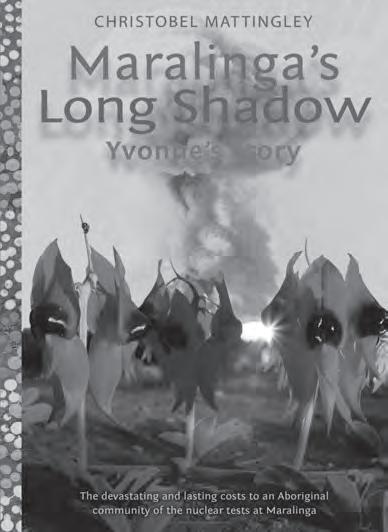
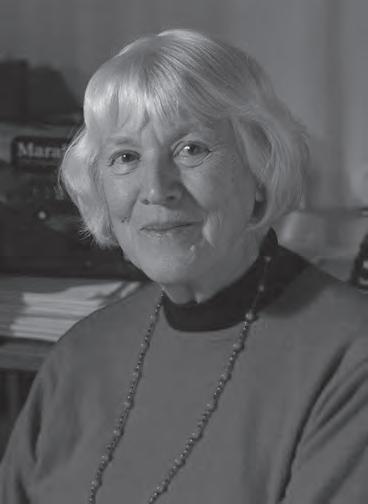
Above: Cristobel Mattingley.
over 13 months and then under supervision for the next three years. So then her next son died of cancer, and a year later her third son died of cancer,” Ms Mattingly tells. “And she was so grief stricken. Although she was painting to earn a living, she couldn’t paint the pictures she wanted to paint.”
Despite the tragedies, Yvonne Edwards was always focussed on her community and keeping her culture strong. “When he was alive, she and her husband David were deeply committed to building a better life for their people.
“They tried so hard to continue the teaching of their traditions, and their culture. And they worked so hard with the young people taking them out bush and giving them bush experiences, and teaching the skills and the craft. “And for people who became addicted, as grog and drugs found their way into that community, when people in their despair turned to those avenues of escape, and so Yvonne and her husband worked with everyone in the community to keep culture strong,” said Ms Mattingly.
Maralinga’s Long Shadow – Yvonne’s Story is published by Allen & Unwin.
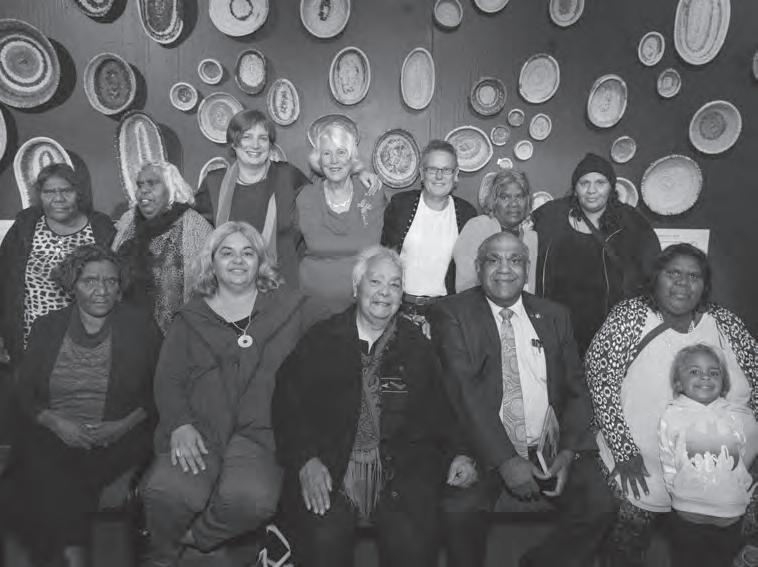
Meet the Mamu – rediscovering Aboriginal Scary Stories
A perception that Australia doesn’t have a tradition of spooky spirits and scary stories led curator Troy Anthony Baylis to present the original exhibition “Boo! Aboriginal Ghost Stories & other Scary Matters” for the Adelaide Festival this year.
“I was at a show at the Adelaide Festival Centre, and I saw a painting of Mamu, which is an Ernabella spooky spirit,” Mr Baylis told Aboriginal Way. “That was about the time of Halloween, I read a newspaper article that questioned why we celebrate Halloween in Australia, and they argued that we don’t really have any heritage of spooky spirits in this country,” he said. “After seeing the Mamu, I thought that we certainly do and so I decided it would be a good idea to curate an exhibition around those themes just to put those stories into the Australian vernacular.”
“Australia too has many of its own spooky spirits, which are a part of Aboriginal knowledge and culture,” he said. “There’s Mamu from the Pitjantjatjara people, Mulyawongk from Ngarrindjeri and Jerrewarrah from Bundjalung people’s stories. They are all indigenous mythological entities, and who’s to say that other stories developed from artists minds are less real than the stories of history,” Mr Baylis explained. The exhibition, which was held at Tandanya National Aboriginal Cultural Institute in Adelaide, included the works of five leading contemporary artists – Bronwyn Bancroft, Joel Birnie, Destiny Deacon, Jacob Stengle and Nura Rupert. The work of Destiny Deacon, who Mr Baylis describes as ‘a superstar in the art world’ opened the exhibition. Her image ‘Whitey’s Watching’ was printed onto the curtain which all visitors walked through to enter the exhibition. The image is of a giant Luna Park face, so visitors braved a giant mouth and teeth, an unsettling start to this spooky show. Once inside, visitors were greeted by a series of four further photographs by Destiny Deacon, starting with the striking image ‘Blakula Rising’ (pictured above). Mr Baylis described the image: “The first image is Blakula, who’s rising out of this coffin, which is actually a shark shaped coffin, it’s quite hilarious and spooky. And you see Blakula’s elongated fingers are caressing the edge of the coffin and then it has this hilarious convivial expression on his face with these obviously fake teeth,” he said. The other photos in Destiny Deacon’s series have a rich cinematic style and blurriness to them. “I think the artist is deliberately drawing on the moving image and early cinematic images of Dracula and Frankenstein and those other films, so to have a blurry image suggests movement,” Mr Baylis explained.
Twelve works by Nura Rupert, a senior Ernabella artist, feature in the exhibition. She creates images of the Mamu, little creatures which Mr Baylis describes as “cutsey but scary at the same time”. “Some of these works depict animals, so these Mamu metamorphise into animals as well,” Mr Baylis said, “and you can usually tell the Mamu works through their eyes.
“It was a very interesting process, wielding the Mamu into the exhibition,” Mr Baylis said. “It did play on my sleep for quite a while, it’s this question of how to you wield something that’s unyielding?”
The Mamu works all include multiples of the little creatures, with their big eyes watching as you move through the exhibition space. Mr Baylis says that he played with archetypes of the scary twin in placing Nura Rupert’s Mamu works in the show.
Jacob Stengle, a South Australian artist of Ngarrindjeri descent, was commissioned to create a new work for the exhibition and the result is a large and vivid impression of the Mulyawongk. “Uncle Jacob’s work has been around for quite a while” said Mr Baylis “He often creates works that are photo realistic.”
“This image of the Mulyawongk is particularly edgy” he said. “In one way it looks like some kind of creature you might find on Hindley Street at 4 o’clock in the morning. Yet it’s also expansive in its paintedness. It has a landscape quality to the creature, a bit like Brett Whitely. It also draws upon Albert Tucker, these mocking sexual grins that he painted in Melbourne in the 1950s.”
“This image has elongated fingernails, I would suggest that the Mulyawongk’s fingernails would latch into you if you went near it,” Mr Baylis observed. The story of the Mulyawongk has long been told by Ngarrindjeri people.
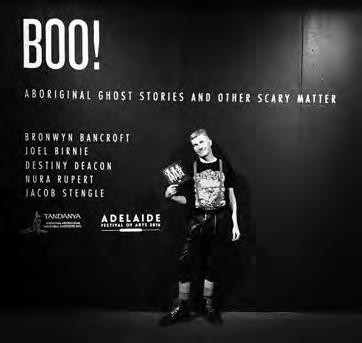
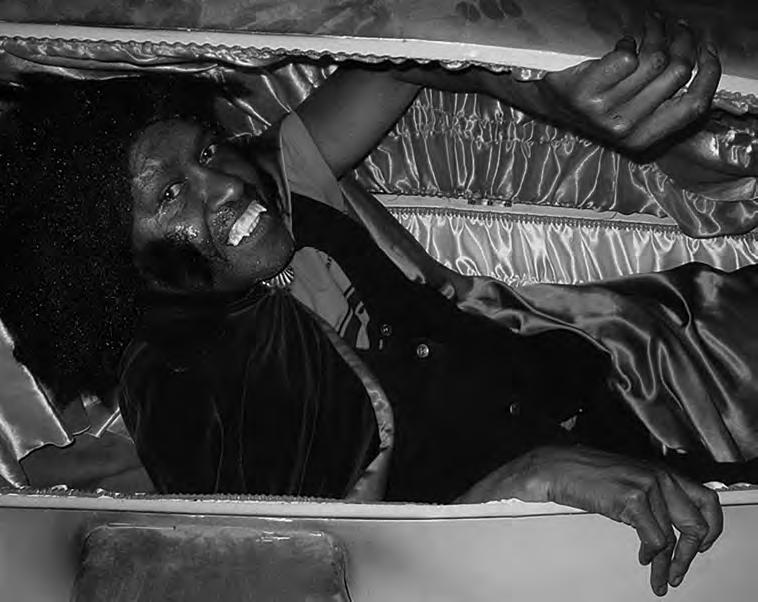
“The Mulyawongk lives in the Murray and the story was created and continues to be told to kids, mostly to keep them safe, to keep them away from the water. So don’t go near the water, or the Mulywaongk’ll get ya,” Mr Baylis explained.
“So not so dissimilar to the nursery rhymes within Western culture, that are often created to keep children safe.”
Joel Birnie – an artist who is a descendent of Tasmanian Aboriginal people and now lives in Melbourne created a new video work for the exhibition.
‘The Messengers’ is a short black and white movie that runs just over 6 minutes.
“It also draws very heavily from the Dracula and Frankenstein movies of the 1920s onwards and draws on Joel’s Romany heritage,” Mr Baylis said. Bronwyn Bancroft is a renowned children’s author based in Sydney. She also created new work for the Boo! Exhibition – two large multi-panel paintings. “One of them is called the Jerrewarrah Protectors, and it’s really stories about what the trees have seen.
“The Jerrewarrah is another spooky spirit, and you know about the Jerrewarrah because of a feeling. So you know not to go to a particular place because the Jerrewarrah are there protecting that place. And the work blurs the boundary between the traditional and the contemporary. Because it is about contemporary horrors, post-colonisation, such as the massacres and the taking away of children, which are depicted in the works. “So the idea is the trees have seen everything, they’ve seen the past and they’re certainly here for the present. And there’s a suggestion that they will also see the future,” Mr Baylis said.
…is recorded weekly at Radio Adelaide. If you have an interesting story or event that you would like to share on radio, please contact Kaliah Tsakalidis or Lucy Kingston on (08) 8110 2800 or email aboriginalmessage@nativetitlesa.org Listen online at radio.adelaide.edu.au




